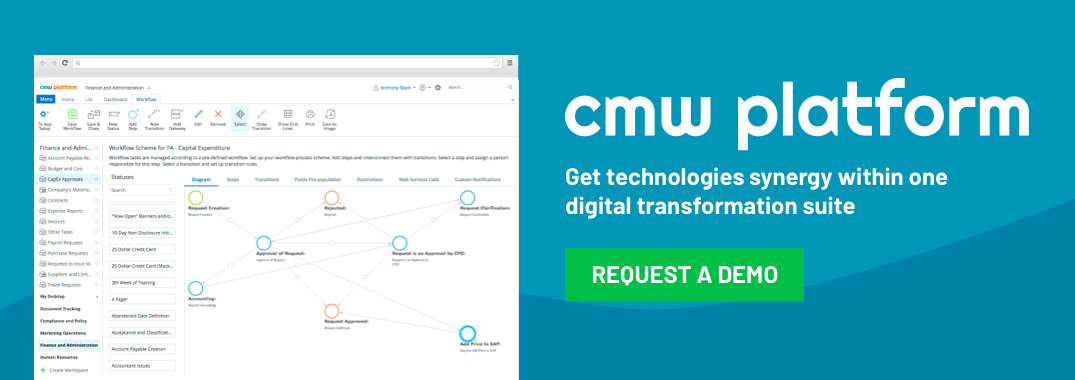4 Factors to Consider When Choosing Your Workflow Template
Wednesday, November 25, 2015 / Updated: February 15, 2023
A workflow template is like any other template in that it provides a pattern that can be reused for consistency. For example, if your organization has to adhere to strict reporting rules whenever there’s a safety incident, a workflow template that spells out all the necessary steps and ensures all key personnel are involved can save you time and ensure accuracy and consistency.


The right workflow template can keep your work processes on track.
Workflow templates can be made for a nearly limitless number of work processes. In regulation-heavy industries, they can help ensure that workflows remain in compliance, and in any industry they can increase efficiency and help ensure the highest quality and consistency in the goods and services you provide.
Choosing a workflow process template requires that you look at your workflow closely, and that you evaluate your workflow template options. A template that outlines steps that are close to the steps in your actual workflow can be easily modified to fit your requirements perfectly. Here are 4 things to consider when choosing your workflow template.
Can your workflow solution be used for, say, HR and IT workflows with equal ease?
Quite often, an organization will start out by using workflow software for a very specific need (like collecting and processing HR forms). If it works out well, the organization may conclude that workflow software could benefit other departments as well. Maybe a workflow for requesting IT services could be created, or perhaps a workflow for submitting budget requests for the upcoming fiscal year. Your workflow software should have the flexibility to allow it to be adapted to any number of work processes, so you can raise efficiency throughout your organization by setting up workflow templates that define and streamline a variety of tasks.


The right workflow template can keep your work processes on track.
Workflow templates can be made for a nearly limitless number of work processes. In regulation-heavy industries, they can help ensure that workflows remain in compliance, and in any industry they can increase efficiency and help ensure the highest quality and consistency in the goods and services you provide.
Choosing a workflow process template requires that you look at your workflow closely, and that you evaluate your workflow template options. A template that outlines steps that are close to the steps in your actual workflow can be easily modified to fit your requirements perfectly. Here are 4 things to consider when choosing your workflow template.
Table of Contents
1. Does Your Workflow Software Give You Enough Options to Choose From?
Workflow software should be about your workflows, not about some “standardized” workflow that may or may not work in your particular application. A workflow software suite with a generous number of workflow templates makes it more likely that you will be able to find a template that’s close to what you need and that it won’t require extensive modification to be useful. A large selection of workflow templates also indicates that your workflow software is designed to work in a number of different settings and industries.2. Can Templates Be Easily Customized for Your Organization?
In addition to an extensive selection of workflow templates, your software should make the customization process simple. You don’t want to go to customize a workflow template only to discover that doing so requires extensive technical skills. When this is the case, you’re more likely to end up selecting a workflow template that seems “good enough” but which will require workarounds or other concessions in order to mesh with your actual workflows. That essentially defeats the purpose of using workflow software, because it’s supposed to make your workflows better, not impose different workflow templates on you.3. Are Workflow Templates Flexible Enough to Be Used Across Departments?

Can your workflow solution be used for, say, HR and IT workflows with equal ease?
Quite often, an organization will start out by using workflow software for a very specific need (like collecting and processing HR forms). If it works out well, the organization may conclude that workflow software could benefit other departments as well. Maybe a workflow for requesting IT services could be created, or perhaps a workflow for submitting budget requests for the upcoming fiscal year. Your workflow software should have the flexibility to allow it to be adapted to any number of work processes, so you can raise efficiency throughout your organization by setting up workflow templates that define and streamline a variety of tasks.



Posted on: in Tips and Tricks